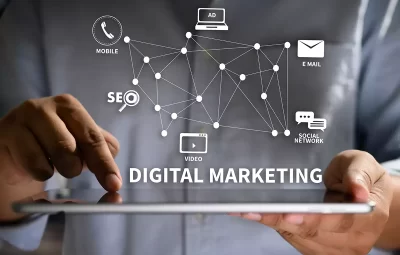Think about the last office you worked in. The hum of fluorescent lights, the constant chatter from a nearby desk, the glare from a window. For many, it’s just background noise. For a neurodivergent person—someone with ADHD, autism, dyslexia, or other cognitive differences—it can feel like trying to concentrate while standing in the middle of a rock concert.
Here’s the deal: a one-size-fits-all workspace doesn’t just fail some employees; it actively works against them. A neurodiversity-friendly setup isn’t about special treatment. It’s about creating an environment where every brain can do its best work. It’s about building a foundation for cognitive inclusivity.
What Do We Mean by Neurodiversity, Anyway?
Neurodiversity is the simple, powerful idea that neurological differences are a natural part of human variation. It’s not a deficit; it’s a difference. This includes Autism Spectrum Condition, ADHD, Dyslexia, Dyspraxia, Tourette’s, and more. A neurodiversity-affirming workplace recognizes this and moves beyond mere accommodation to genuine inclusion.
And honestly, when you design for neurodivergent minds, you often create a better, more flexible environment for everyone. It’s a classic curb-cut effect.
The Sensory Symphony (Or Cacophony) of the Office
Sensory input is perhaps the biggest hurdle—and the biggest opportunity. For many neurodivergent individuals, processing sound, light, and touch isn’t automatic; it’s a constant, conscious effort that drains cognitive resources.
Taming the Soundscape
Open-plan offices are, frankly, a nightmare for many. The solution isn’t just to crank up the silence, which can be equally unnerving. It’s about offering auditory choice and control.
- Provide High-Quality Noise-Canceling Headops: Make them readily available, not a special request.
- Create Dedicated “Quiet Zones”: Enforce a no-talk, no-phone policy. These should be true sanctuaries.
- Invest in Sound Masking: Systems that emit a soft, uniform background sound (like pink noise) can neutralize distracting conversations.
- Offer Different Seating Options: Think library-style carrels, small phone booths for deep work, and collaborative areas—clearly marked for their purpose.
Mastering the Light
Flickering fluorescent lights are the arch-nemesis of focus for so many. The harsh, direct glare can cause headaches, anxiety, and make it impossible to concentrate.
So, what’s the alternative?
- Ditch the Overhead Lights: Where possible, switch to indirect lighting. Uplighters that bounce light off the ceiling create a softer, more diffused glow.
- Provide Task Lighting: A simple, adjustable desk lamp gives an individual complete control over their immediate visual field.
- Use Natural Light Wisely: But be mindful of glare! Offer adjustable blinds and provide access to desk space away from direct sunlight.
Furniture and Layout: The Geometry of Comfort
Physical space matters. A lot. An unpredictable, crowded layout can be a source of constant low-grade stress.
| Consideration | Neurodivergent Pain Point | Inclusive Solution |
| Desk Placement | Being in a high-traffic path causes distraction and anxiety. | Offer desks facing a wall or a quiet corner. Provide “assigned” seating to reduce daily uncertainty. |
| Movement | ADHD and autistic individuals may need to stim or move to regulate. | Offer a variety of seating: wobble stools, standing desks, and even floor seating options. Allow for fidget tools. |
| Predictability | Hot-desking creates daily anxiety about where to sit and what the environment will be like. | If hot-desking is necessary, create clear, consistent zones (Quiet, Collaborative, Social) with intuitive signage. |
Tech and Tools for Cognitive Load Management
Neurodivergent brains often process information differently. The right technology can reduce cognitive load, freeing up mental energy for the actual work.
Software that Supports
Think about communication and project management. A chaotic mix of Slack, email, and sticky notes is a recipe for overwhelm.
- Centralize Communication: Use a primary platform (like Teams or Asana) and establish clear norms. Is this channel for urgent queries or casual chat?
- Embrace Visual Aids: Use tools like Trello or Miro for project management. Visual timelines and kanban boards can be much easier to process than dense text.
- Offer Text-to-Speech & Speech-to-Text: Crucial for dyslexic employees and incredibly helpful for anyone struggling with focus or information processing.
The Power of Clear, Written Instructions
This one is huge. Vague, verbal instructions can get lost in translation. A neurodiversity-friendly culture values clarity.
Provide written briefs. Outline the goal, the steps, the deadline, and—importantly—the “why.” This benefits everyone, reducing misunderstandings and saving managers time on follow-up questions.
The Human Element: Culture is the Secret Sauce
You can have the perfect, sensory-friendly office, but if the culture is rigid, it all falls apart. The physical space and the cultural space have to work in tandem.
This means normalizing the use of noise-canceling headphones without interruption. It means managers giving feedback in a direct, structured, and constructive way. It means allowing for flexible work hours to match individual energy patterns—because not everyone is a morning person.
It’s about psychological safety. An employee should feel safe to say, “I need to work from a quieter room to finish this report,” without fear of being seen as antisocial or difficult.
A Final Thought: Beyond Compliance
Designing a neurodiversity-friendly workspace isn’t a checklist you complete for HR. It’s an ongoing conversation. It’s a commitment to understanding that the way we experience the world is not monolithic. It requires curiosity, flexibility, and a willingness to ask your team what they need—and then, crucially, to listen to the answer.
The most innovative, resilient, and creative companies will be those that don’t just hire for neurodiversity, but actively build for it. They’ll be the ones who realize that the ultimate productivity hack isn’t a new app; it’s an environment where every single mind is allowed to thrive.







